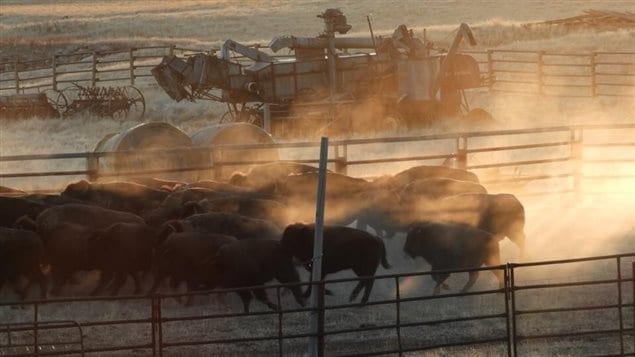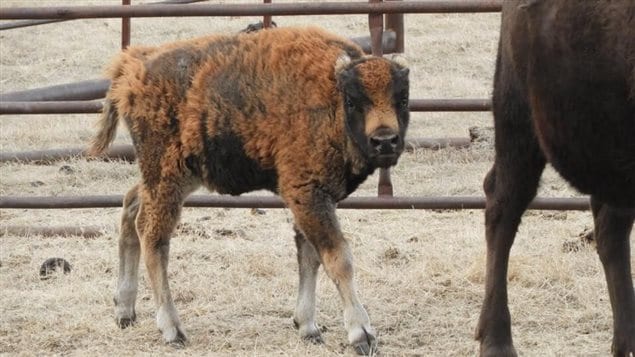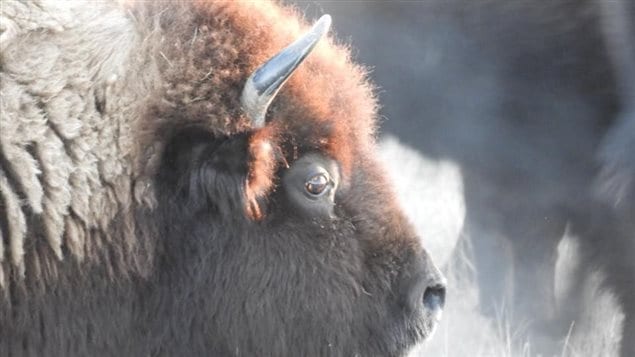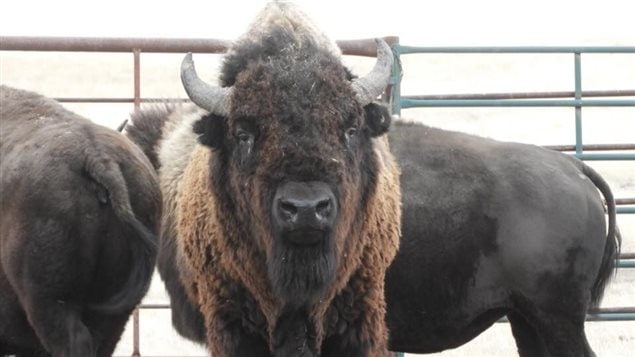Bison are huge, shaggy and fierce-looking animals and I was amazed to learn that conservationists in western Canada were catching them and fitting them with collars. Nine females were recently collared with a GPS device so they can be tracked as they and the herd move through the Old Man on His Back ranch.
From millions of bison to near extinction
This is an area measuring 13,000 acres in the western province of Saskatchewan. It was acquired by the Nature Conservancy of Canada with a view to preserving the natural prairie ecosystem. An estimated 30 million bison used to roam the huge grassland territory at the heart of North America before the arrival of Europeans. Several aspects of colonization lead to their near extinction by the late 1800s.
There are efforts to build herds and increase populations in parts of western Canada. In 2003, the Nature Conservancy of Canada introduced a herd of bison to this ranch to try to replicate the natural ecosystem. Now it wants to find out where the bison are grazing to help it better manage the area.

Good food used to entice bison
So how did they capture and collar the bison? “That’s an exciting part of being a wild land researcher,” says Matthew Braun, a conservation science and planning manager with the Nature Conservancy of Canada. He said they first enticed the bison into a large pen with some high-quality feed. The animals tend to move away from humans so, between the feed and the placing of people, they manoeuvred the bison through smaller and smaller pens connected to each other.
ListenIn the final, very small pen: “The head is sticking out of the chute, out of that enclosed area, and it leaves the head exposed. The horns are sort of out of the way so they’re not going to hurt anybody,” says Braun. A rope is tied around the horns and fixed to the fence while trying to keep the animal as calm as possible.

Collaring takes about 20 minutes
“We put the collar on. It’s designed specifically for the bison. We can set it to just the right size. It takes them about 20 minutes to fasten it when everything goes well,” says Braun. Even though only nine females were collared, bison tend to stick together and it should be possible to learn where the whole herd is grazing.
“We can look at what kinds of plants are growing there, what the soil looks like where they spend the majority of their time and tell what impact they’re having on the plants and the animals that require those places,” says Braun. If the bison are over grazing in one area, efforts will be made to move them to another. The goal is to preserve the ecosystem as much as possible in its original state.









For reasons beyond our control, and for an undetermined period of time, our comment section is now closed. However, our social networks remain open to your contributions.